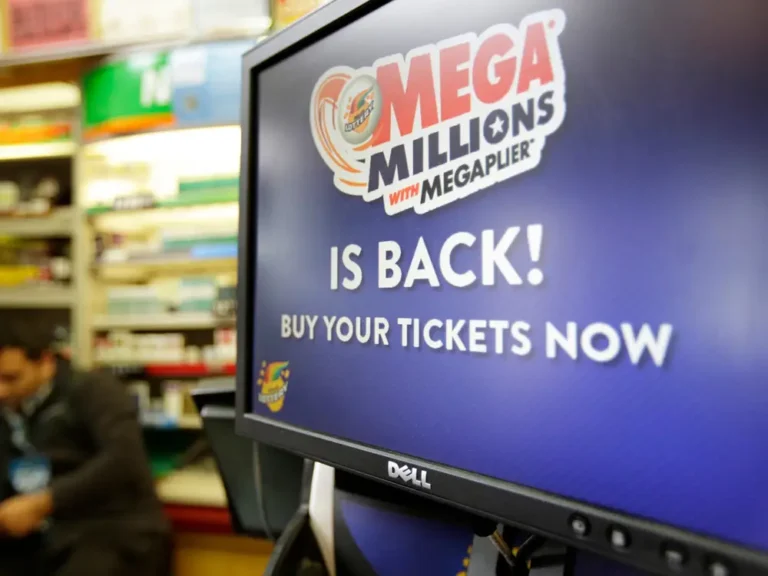The 15-page pitch deck a former Patreon employee used to raise $2.75 million for his sports creator app, and how he’s getting athletes on the platform

- Grandstand is designed to link fans with exclusive content from their favorite athlete creators.
- Founder Sandeep Rajan used to work at Patreon and Dropbox and was an amateur golfer.
- He shared the 15 pitch deck slides Grandstand used to raise $2.75 million in a funding round.
One of the most recent startups to emerge on the creator economy scene is already making waves, having raised millions of dollars and signed ten athletes in the last six months.
Former Patreon and Dropbox employee Sandeep Rajan founded Grandstand in April to fill a market gap: potential earnings opportunities for athlete creators.
He’s developing an app that will feature exclusive content from athletes such as livestreams, ask-me-anythings, merchandise, and message boards. Similar to Patreon and OnlyFans, fans would be able to pay to access content from individual athletes. Each athlete would interact with their fans while also earning money through the platform.
“The fans are very much desperate to get closer to the game, to get closer to the action, to understand and access what’s happening inside the arena with their favorite athletes, and are willing to pay for it,” Rajan was quoted as saying by Insider.
Will Ventures, which invests in early-stage consumer, health, and media startups such as Just Women’s Sports, recently led a $2.75 million funding round for Grandstand. A small group of angel investors, mostly from Rajan’s network, also contributed to Grandstand.
Rajan stated that the startup has ten employees, seven of whom are full-time.
“We’re very fresh out of the oven here,” that’s what he said. “Still very much baking.”
Grandstand is collaborating with Parity, a company that assists female athletes in obtaining brand deals, to bring female athletes onto the platform. Rajan believes Grandstand will be able to engage passionate fans of women’s sports while also bringing niche fanbases closer to their favorite athletes. According to him, the model would also generate new revenue streams for professional female athletes, who are frequently underpaid in comparison to their male counterparts.
“We can unlock a revenue opportunity that allows for sport to be sustainable year-round, across sports, in ways that can make pursuing a professional sport a meaningful and viable career choice,” he told the crowd.
Rajan shared the two pitch decks Grandstand used to convince athletes to join the platform and investors to back the company with Insider. Three key slides from the 10-page pitch to athletes and the full 15-page deck used to win over investors are included below.
Athletes Pitching Grandstand
Grandstand, which has yet to launch, has ten athletes signed up so far. Its first creator was James Nicholas. The professional golfer has over 100,000 Instagram followers and 375,000 TikTok followers, where he posts highlight clips, tips, and behind-the-scenes content.
Rajan did not reveal the identities of the other nine athletes, but stated that their sports ranged from basketball to lacrosse to snowboarding. According to Rajan, seven of them are women, six compete professionally, and the remaining four are college athletes.
Grandstand intends to take 10% of the revenue generated by athletes on the platform and offer them equity in the company.
Grandstand, according to Rajan, is currently focused on athletes who have already built audiences but need assistance in expanding and engaging with their fanbases.
“We’re making them feel like this is not social media,” he said. “This is something that is effectively almost like a personalized agency for them to help ultimately build and manage their relationship with their fans.”
Grandstand used YouTube sensation MrBeast in its pitch deck to get athletes on board, demonstrating how lucrative a creator career can be.
According to one slide, MrBeast earns $100 million per year (though Forbes claims he earns closer to $80 million).
Grandstand also described the tools it would provide, such as a space to create and upload content to engage with fans, as well as data on the performance of the content and the size of the athlete’s audience.
In another slide, Grandstand positioned itself as a “passive, recurring revenue” stream for athletes, supplementing competition earnings and brand deals. It would provide athletes with the opportunity to connect with passionate fans who have the resources to support them, either as a member who pays monthly to access content or as a sponsor who contributes more.
Grandstand’s investor pitch
However, before athletes could begin earning money on the platform, Grandstand needed to raise capital to get it off the ground.
The initial funding round is intended to help the company sign more athletes and launch the app.
Grandstand used the following 15-slide pitch deck to raise $2.75 million in its initial funding round:
The presentation begins with a title slide that pops with color.
It lists the follower counts of some of the biggest team franchises in sports.
Prior to social media, teams drove the sports business model by selling tickets and signing TV rights deals. Athletes were not a “principal agent in the monetization bit of it,” according to Rajan.
This slide shows the number of followers for some of the biggest sports franchises. At the time the slide was compiled, the Los Angeles Lakers had 20.9 million followers, the Dallas Cowboys had 4.3 million, and the New York Yankees had 3.1 million.
It shows athletes can have even bigger follower counts.
According to Rajan, social media allows athletes to engage with their fanbase and monetize their status like never before.
The slide depicts LeBron James’ (142 million) Instagram followers, Serena Williams’ (16.1 million), and rock climber Alex Honnold’s (2.5 million).
A breakdown of how athletes can create more revenue streams.
The slide depicts the impact of this change, as well as how athletes can now generate more revenue through membership and commerce opportunities that leverage their brand.
“It turns every athlete from somebody who’s pretty much dependent on their team for their income to owning their brand,” he said, “to having these income sources that are not just from the league or team they work for, but directly a function of the fans and the audience that they’re able to build themselves, their own customers.”
The market potential for athlete creators.
Estimates for the grandstand:
- 8 million high school athletes in the United States
- 1 million professional or semi-professional athletes worldwide
- 400,000 college athletes in the United States
- 14,000 Olympic athletes
According to the company, all of them have the potential to build and monetize their brand.
Sports fans total in the tens of millions.
The slide included statistics that indicate a growing audience of sports fans. It emphasized a 24 million-strong audience willing to pay for sports journalism, citing New York Times research reported by the Washington Post, for example.
Monetizing one’s brand is about more than a high follower count.
The slide lists the platforms that creators use to grow their audiences, monetize their brands, and manage their finances, ranging from Patreon to Shopify to Squarespace.
Athletes are busier than other creators.
According to Grandstand’s pitch, the complexity and time commitment of being a content creator do not align with an athlete’s schedule.
Enter Grandstand.
The pitch gives a preview of the app, where the athlete bio page serves as the front door to exclusive content.
Before joining an athlete creator’s community, the athlete card would provide users with biographical information about the athlete creator.
Fans can get exclusive access to their favorite athletes.
The fan would be able to interact with other users, view content from the athlete, and purchase merchandise.
Grandstand would track the metrics for athlete creators
Grandstand would allow athletes to track the size of their audience as well as their earnings in a single app.
The fan-based subscription model has been ‘proven.’
Rajan cited Patreon, Substack, and OnlyFans as examples of successful business models.
The slide estimates that Grandstand’s 10% take-rate model with 25,000 athletes in the system could generate $100,000 in annual revenue.
The founder lays out his credentials.
Rajan discusses his background and expertise in business and sports. He was the former founder and CEO of news aggregator Wiser, as well as a former employee of Patreon and Dropbox. He was also an amateur golfer.






